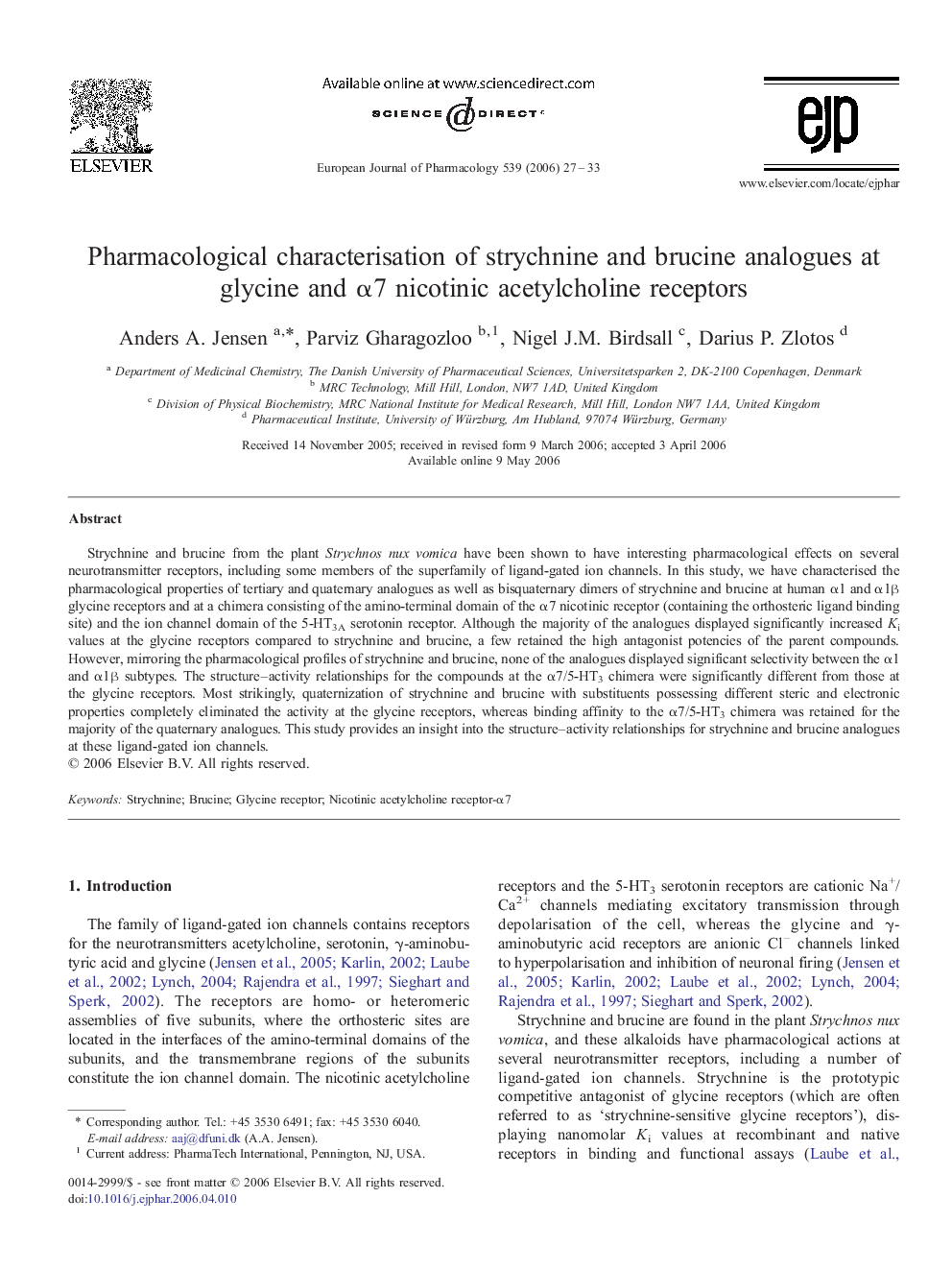| Article ID | Journal | Published Year | Pages | File Type |
|---|---|---|---|---|
| 2537314 | European Journal of Pharmacology | 2006 | 7 Pages |
Strychnine and brucine from the plant Strychnos nux vomica have been shown to have interesting pharmacological effects on several neurotransmitter receptors, including some members of the superfamily of ligand-gated ion channels. In this study, we have characterised the pharmacological properties of tertiary and quaternary analogues as well as bisquaternary dimers of strychnine and brucine at human α1 and α1β glycine receptors and at a chimera consisting of the amino-terminal domain of the α7 nicotinic receptor (containing the orthosteric ligand binding site) and the ion channel domain of the 5-HT3A serotonin receptor. Although the majority of the analogues displayed significantly increased Ki values at the glycine receptors compared to strychnine and brucine, a few retained the high antagonist potencies of the parent compounds. However, mirroring the pharmacological profiles of strychnine and brucine, none of the analogues displayed significant selectivity between the α1 and α1β subtypes. The structure–activity relationships for the compounds at the α7/5-HT3 chimera were significantly different from those at the glycine receptors. Most strikingly, quaternization of strychnine and brucine with substituents possessing different steric and electronic properties completely eliminated the activity at the glycine receptors, whereas binding affinity to the α7/5-HT3 chimera was retained for the majority of the quaternary analogues. This study provides an insight into the structure–activity relationships for strychnine and brucine analogues at these ligand-gated ion channels.
